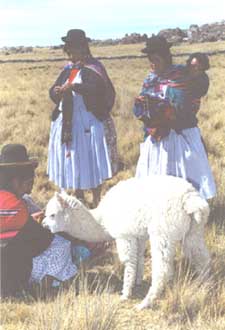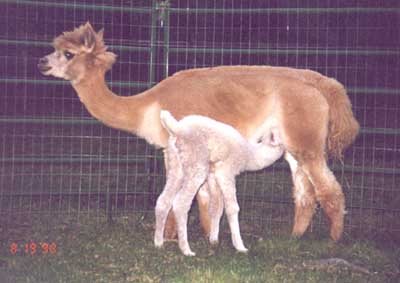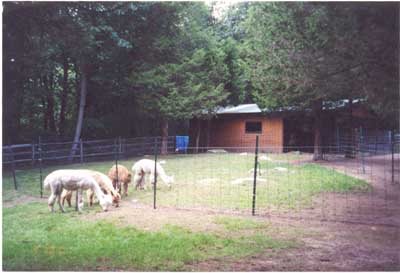|
ALPACA INFORMATION  Historical Facts:
Historical Facts:Alpacas are members of the camelid family which also include camels, dromedaries, llamas, guanacos, and vicunas. Although camelids originated in North America millions of years ago, the llama-like animals migrated to South America. Alpacas, along with llamas, became domesticated and are among the oldest domestic animals in the world. Alpacas are bred primarily for their exquisite wool and now total approximately 3.5 million in South America alone. At this time, there are approximately 147,000 alpacas in the United States and Canada. Babies: Baby alpacas are called crias (pronounced creeahs). One cria is delivered without assistance from a standing mother, most often in the morning. They can weigh between 10-22 pounds and generally stand and nurse within 30 minutes to an hour. They can be weaned at about 6 months. Reproduction: Females can be bred at 15-24 months and males begin to work between 2 and 3 years. Alpacas do not have a heat cycle but are induced ovulators meaning ovulation occurs 24-36 hours after breeding. They can be bred at anytime of the year and the average gestation period is 335 days. Physical Facts: An alpaca can weigh between 100-200+ pounds and stand 36" at the withers. The average life span of an alpaca is 15-25 years. Color: Fiber color ranges between black to white with 22 shades in between including gray, fawn, brown, and red. It may be solid, spotted, or marked in a variety of patterns. Health: Because alpacas and their ancestors are especially suited to the harsh environment of their Andean homeland, North American owners find them hardy, healthy, and easy to care for. |

